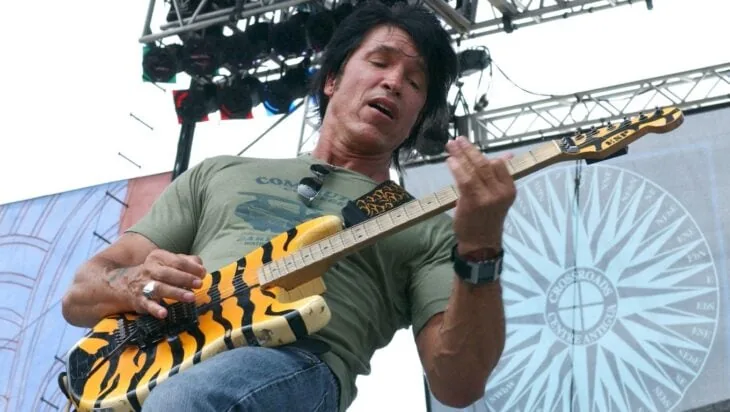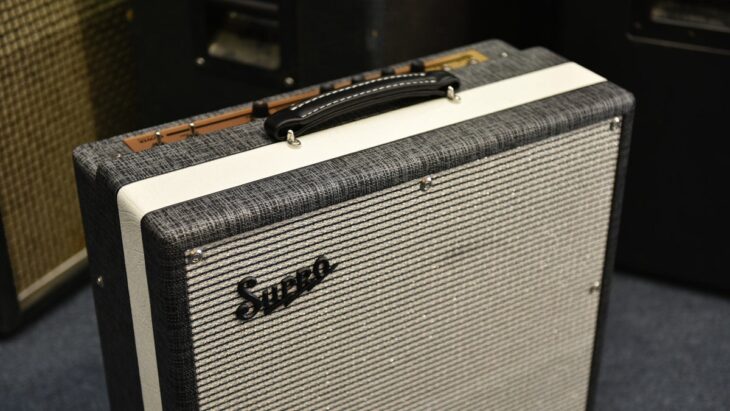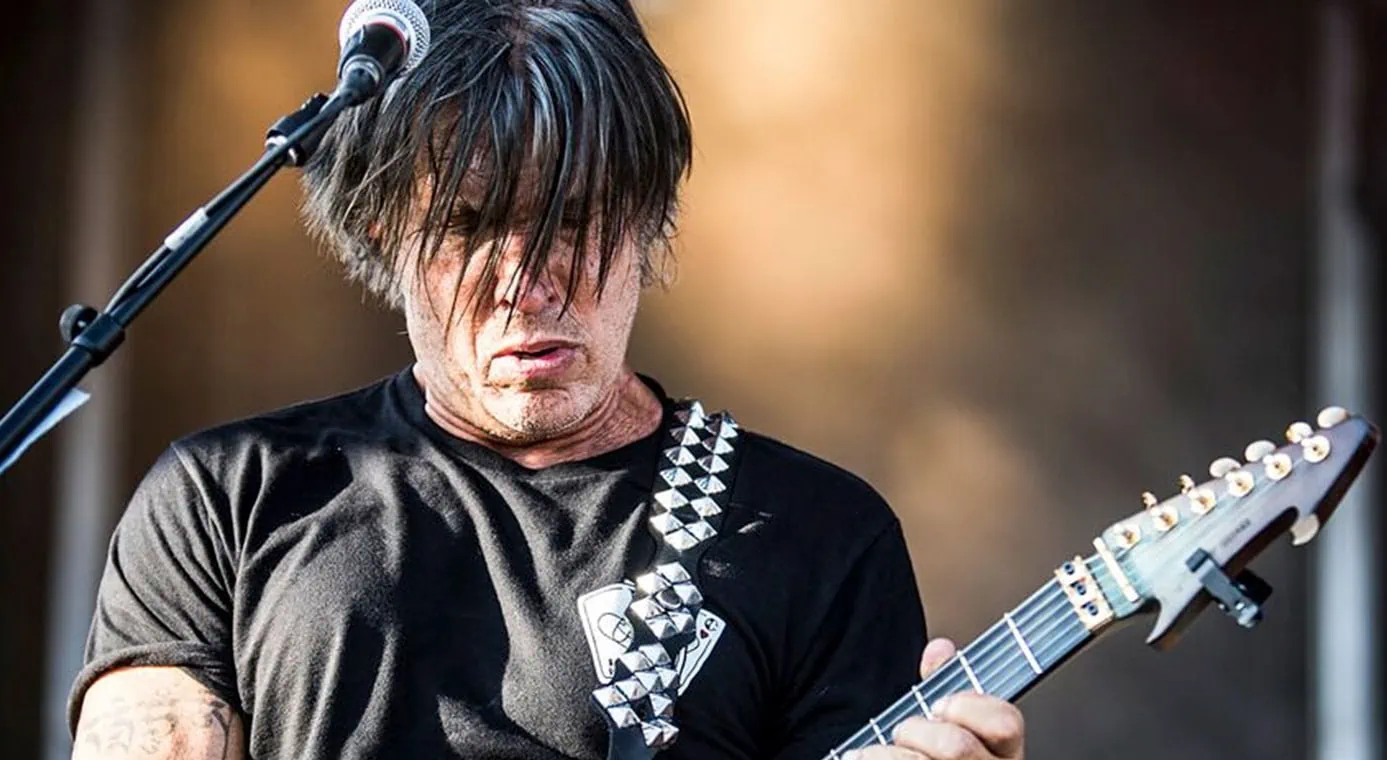From his early days with Dokken to his solo band Lynch Mob, George Lynch left a mark on hard rock that is not easy to erase.
With his shred-style solos and heavily distorted riff work, Lynch is considered by many as one of the most influential rock guitarists of all time.
Shooting to fame in the ‘80s, his time with Dokken was as dramatic as it was successful. The band was able to score a number of platinum albums, thanks in large part to Lynch’s iconic tone and memorable playstyle.
Not bad for a guy who got fired by Ozzy Osborne!
If you’re looking to emulate Lynch’s iconic and genre-defining tone for yourself then look no further, I’m going to walk you through the guitars, amps, pedals, and settings Lynch used throughout his career to get you sound like an ‘80s rock god in no time.
Table of Contents
Guitars

When Lynch was just getting started in the California music scene, he used a custom-built Charvel and Kramer guitar that he’d put together himself.
It was essentially a Partscaster, with a single Seymour Duncan humbucker at the bridge, 21 fret Strat style neck, and finished in an iconic “tiger stripe” paint job.
Fast forward to the mid-’80s, Lynch signed an endorsement deal with Japanese guitar manufacturer ESP and has been rocking their models ever since.
His first collaboration was the Kamikaze, a custom-designed piece that resembled his homemade partscaster in terms of setup and looks, only now it has a single coil pickup to the neck, giving him a 3-way tone selection and more versatility while playing on stage.
ESP did release a copy of Lynch’s original Tiger Stripe, which is an affordable mid-range guitar. But if you’re on an even tighter budget, I recommend you do the same thing he did and build your own for a fraction of the cost.
The ‘Tooth and Nail’ guitarist has also been spotted using more mainstream rigs, like the ’60s Les Paul and even a Stratocaster from time to time.
What all of Lynch’s guitars have in common, especially his collaborations with ESP, is the Seymour Duncan humbucker. They sell a George Lynch signature Screamin’ Demon humbucker pickup, which’ll get you pretty close to his tone.

You want something with high output. The more heat the better. Even if you get yourself a set of Seymour Duncan Hot Rodded SH-4’s or the Zebra Pearly Gates, you’ll be more than capable of recreating Lynch’s tone without spending a fortune.
Tuning
Lynch was pretty basic when it comes to his tuning. The majority of the stuff he wrote for Dokken and Lynch Mob are in standard E (E A D G B E) tuning or ½ step down (Eb Ab Db Gb Bb Eb) tuning.
Lynch would, however, sometimes use Drop B (B F# B E G# C#) tuning to help him get a darker tone when recording rhythm sections.
Amps
Geroge swears by his signature Randall Lynch Box, a 100W All Tube Amp Head that gives Lynch access to his most iconic tones. It’s perfect for getting that high-gain, distorted hard rock sound Lynch used in the majority of his music.
He would pair his preamp with something that could handle the high output, and gain heavy music he played, like a Marshall DSL40 or his personal favorite the Supro 1695T Black Magick.

As an ‘80s rockstar, Lynch tends to avoid using digital amps and interfaces, keeping as much of his setup analog as possible. But that doesn’t mean you can’t.
Pair your digital interface with something high-output, like this affordable Boss Katana 100. Throw a little digital overdrive into the mix and you’ll be chugging away in no time.
George Lynch Amp Settings
It doesn’t get more ‘80s than George Lynch. That’s why you’ll need to aim to get as much gain, output, and clarity out of your amps as possible.
From his solos to just general riff work, his sound is aggressive and heavy, full of high-end frequencies, with very little low-end noise coming through.
Gain: 8 – It’s not the ‘80s if we don’t have the gain turned up. Thanks to the high-output gear Lynch used, he could heavily saturate his mix without losing tonal clarity.
Bass: 2.5 – Since Lynch is aiming for that high-end squeal we love from ‘80s rock, the bass needs to be kept low. Putting too much bass into the mix will quickly dominate and drown out the top end.
Mids: 5.5 – We want to keep the mids kind of neutral here but still present enough so that we get that aggression and sonic pick response with each stroke.
Treble: 7 – Top-end… that’s what this is all about baby. Opening up the treble gives you a solid boost to make your mix sound angry and hairy all while giving your distortion pedals more room to play with.
Tooth and Nail
Angry, crunchy and full of distortion, Tooth and Nail uses that iconic George Lynch tone that can be heard on a lot of Dokken’s stuff.
Because the song is centered around the intro guitar riff, we need to make sure we keep clarity and definition, while still giving the amp enough grit and distortion to sound wicked.
Gain: 6
Bass: 4
Mids: 5
Treble: 7
Breaking the Chain
Gain, gain, and more gain!
Breaking the Chain is one of Dokken’s darker-sounding tracks, and since Lynch’s riff isn’t as intricate as in tracks like Tooth and Nail, he adds more gain and even increases the bass to give the track more atmosphere and oomph.
Gain: 7
Bass: 5
Mids: 5
Treble: 6.5
Wicked Sensation
No doubt influenced by the emerging alt-rock scene of the early ‘90s, Wicked Sensation is gritty, heavy, and less distorted than Lynch’s previous songs.
We’re gonna turn the treble down just a bit here to really emphasize the low and mid-range frequencies to help give the track some depth.
Gain: 6.5
Bass: 4
Mids: 5
Treble: 5.5
Pedals
Like we touched on before, Lynch wasn’t really a fan of using digital interfaces and preferred having the mechanical component to hand.
He likes to use the Boss DS-1 Distortion pedal, the Cusack Screamer Fuzz pedal, and the T-Rex Engineering MAB Overdrive pedal to dirty up his tone when recording and performing live.

Except for the Boss DS-1, it’ll be hard to find those pedals. As an alternative, you can go with the Pro Co Rat 2 pedal, which can serve both as a fuzz and an overdrive pedal. For an even cheaper option, you can’t go wrong with the Behringer SF300 Super Fuzz Pedal.
When he needs to quickly switch between clean boost, overdrive, and distortion, Lynch uses the HomeBrew Electronics Skullcrusher which gives him the ability to change on the fly when playing live.
If you really want to get the George Lynch sound, you could overlap your pedals like he does. Lynch will often use two overdrive pedals or pair a pedal with a preamp feature to really get the most out of his sound.
An ‘80s Icon
Lynch’s sound is iconically ‘80s. His popularity waned as the ‘90s kicked off and other genres like alt-rock and grunge exploded but that hasn’t slowed Lynch down one bit.
He’s still recording new music and finds time to tour with former Dokken members as well as his own band.
The trick to getting his tone down is understanding how the gear works. Lynch is a diehard gear nerd and everything from amps to pickups and even pedals is chosen for a specific purpose.

